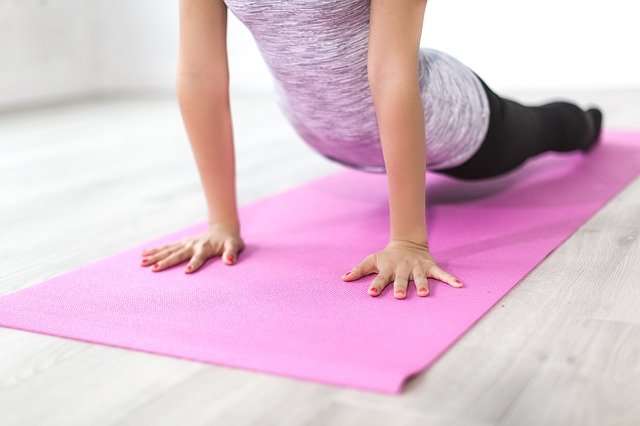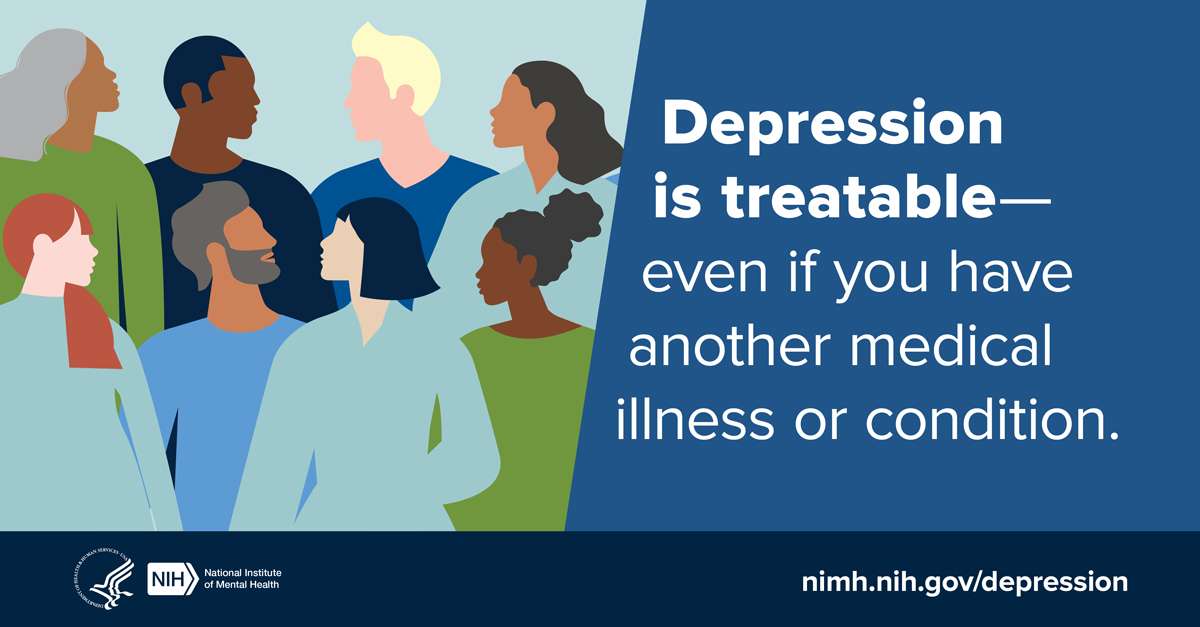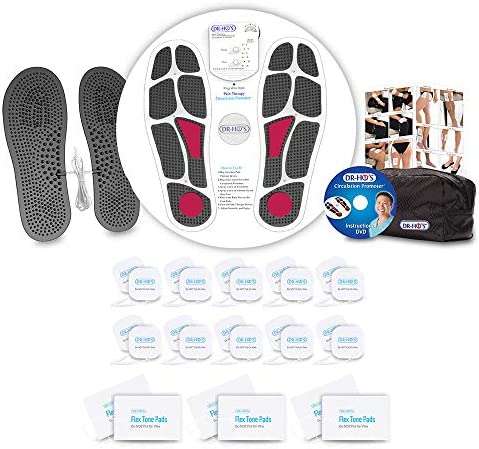How Often Should I Do My PT Exercises?

At Home Advantage Rehabilitation Solutions, one of the most beneficial aspects of our services is that we will travel to provide care from the comfort of your own home. This means patients in pain don’t need to travel to receive care. However, the healing process should not stop when we leave after the appointment is over. If you’re serious about recovering, you should be completing the exercises we teach you to perform even after we are gone. But how often should you be performing them? Our team has the answer to these questions.
What Is Physical Therapy?
Before addressing how often you should be completing these exercises, our team first needs you to understand physical therapy. This healing process involves the use of therapeutic stretches and activities targeted to the affected area. Our team will perform a full assessment to determine the level of physical output the injured area can handle and then move forward with a treatment plan. Examples of the benefits that come from doing so can include:
-
Improved flexibility.
-
Increased range of motion.
-
Regained strength.
-
Elimination of pain.
-
Mitigated risk of future injuries.
Performing Exercises On Your Own
As previously stated, just performing the exercises during your scheduled appointments will not be enough for you to make a full recovery. If you choose to go down that route, the recovery timeline will be vastly extended. You also increase the risk of suffering from certain medical complications. For the treatment to be effective, we highly recommend performing these exercises around 3 to 5 times a week for 2 to 3 weeks. In order to stick to this plan, we’d like to lay out the below advice:
-
Block off 30 minutes in your calendar on days you’d like to perform these exercises.
-
Set an alarm for when you’d like to start exercising.
-
Record your pain level to watch it change. Please report any suspected issues with your pain levels to our team.
-
Ask our team which exercises you should be prioritizing.
-
Pair your physical therapy exercises with regular daily activities.
Should You Do Rehab Exercises Everyday
Dealing with an injury can be annoying. Just remember that rest is an extremely important part of the healing process. Taking part in rehab exercises is key to gaining strength and mobility back in the injured area. With that being said, there must be rest days in between; without it there will be no progress. That is due to the fact that the muscles don’t have time to recover.
Contact Our Team
At Home Advantage Rehabilitation Solutions, we understand the importance of our services. That is why we are always here to help. If you’d like more information regarding how often you should be performing your physical therapy exercises, contact us today.
Reading Time:
7
minutes
Exercises that are used to rehabilitate after an injury or illness or to maintain a normal range of motion should be performed daily or multiple times per day. Exercises that are used for strength training should be done every other day. If you’re still working with a physical therapist, your appointments should occur once per week.
Physical therapy is an important routine that can be used after experiencing some sort of injury or disability. There are different therapy exercises that are used in different scenarios, and the frequency at which you do these exercises will depend on what your therapist recommends. There is no one set schedule that is followed in all situations.
After the initial injury or surgery, it’s important that you recover before starting any kind of exercise protocol. While physical therapy can be used to reduce any pain or inflammation that exists, you want the body to heal first.
How often should I do the exercises given to me by my therapist, how many reps should I do and how many sets are beneficial?
Your therapist will provide you with a list of exercises that you’ll need to perform each time you’re focusing on your rehabilitation. They will also provide you with the number of times that you should be doing these exercises for maximum benefits.
While you’ll want to follow the directions given to you by your physical therapist, you’ll typically be doing your exercises each day, one to three times per day. If you find your exercises to be challenging, you can break them down to more frequent sessions with a shorter time period. You may be doing about 15 reps at a time, with three or four different sets. You may start out with less, working your way up.
How many days per week should you perform your physical therapy?
Physical therapy can be performed at your therapist’s office, or you can work independently at home. You may perform a combination of both these things. When working with a physical therapist in person, you’re looking at one or two appointments per week. If you’re in a lot of discomfort or have a long way to go, three appointments may be scheduled. In regards to doing your exercises at home, your therapist will let you know how often you can do your own work. Stretches and simple PT could be daily if you can tolerate it.
Will doing PT exercises everyday make your rehab more effective?
During your initial evaluation, your physical therapist will be able to determine what schedule you should follow for your therapy in order to achieve results in the shortest amount of time possible. Your schedule will focus on what’s safe for you. It’s important that you maintain a consistent schedule in regards to your rehab, but you also have to pay attention to allowing your body to heal in between your sessions. Rest is often just as important as the rehab itself.
Talk to your therapist about which exercises you can do each day to help speed up your recovery. They may not want you doing all of your tasks on a daily basis, but they may be able to provide you with supplementary exercises that you can do on days when you’re resting but would still like to put some sort of work in that will speed up your recovery.
When is physical therapy needed?
There are many people who can benefit from physical therapy, even those that have not recently experienced a major injury. Whether you’re dealing with decreased mobility or a major neurological issue, PT can help you regain your range of motion. Some of the most common reasons people use physical therapy includes:
- Neck pain
- Back pain
- Balance issues
- Incontinence
- Fractures or brakes
- Arthritis
Why is physical therapy your best option?
Physical therapy has the potential to improve a number of issues relating to pain, discomfort, balance problems, decreased motion, decreased independence, managing age-related issues, recovering from a surgical procedure, managing heart disease and much more.
What can you expect with physical therapy?
When you first start working with a physical therapist, you will be evaluated. This evaluation will determine what your current issues are while taking into account where you want to be. A plan will be made that outlines different exercises that will be used to stretch your body, strengthen your muscles and help you regain what you’ve lost.
Using Extension Eccentrics
When you’re performing the task of extending certain muscles in the body, eccentric training forces you to focus on slowing down that elongation of the muscle. This is used to really work and challenge your muscles to make them stronger and repair them faster. Instead of using all of your effort to move your muscle into position and then drop it quickly, your let down will be just as slow and controlled as the initial movement.
Using Supination Eccentrics
A supination injury occurs when a part of your body over extends when it’s in the process of bending. This causes trauma to that area. Supination eccentrics is a form of therapy that will focus on healing the area while helping you to go back to a full range of motion.
An example of supination eccentrics includes the following exercise:
- Rest your arm and the palm of your hand on top of a table.
- Move your forearm that your palm now faces upward.
- Make a fist with your hand.
- Your opposite hand is used to apply direct force to your first while attempting to turn the palm of your hand downward. Do this for about five seconds. Your good hand / arm should win the challenge, allowing your forearm to rotate inwards.
- Repeat this process ten times and repeat for three sets.
Working on your physical therapy on your own
Once you’ve met with a physical therapist professional and have established a routine that will be used moving forward, you may be advised that you can do certain work on your own. If you’re just starting out with your therapy, you’ll likely be doing some simple stretches and exercises to improve your range of motion and to help you heal. Over time, the work that you do on your own can help to reinforce what you’re already doing with your physical therapist. You may be able to shorten the length of your recovery if you’re more diligent about getting your therapy done each day. Of course, it’s important that you plan in some rest days so that your body can recover properly. Otherwise, you could end up having setbacks instead of progressively moving forward.
Frequently Asked Questions
How many times per week is physical therapy necessary?
The frequency of physical therapy appointments will vary from person to person. It really comes down to what the injury is, what the recovery period is, what challenges a person is facing and where they want to end up. It’s important to follow the schedule that your physical therapist has outlined for you. If you deviate too much, this could result in a much longer recovery period than you planned for.
You should plan on making an appointment with your physical therapist two to three times per week. Depending on what condition you are in and the amount of work that needs to be done, you may need to plan for more appointments each week. As you progress over time, you may be able to put less work in. Your exercises will also become much more routine. You’ll find that they become a quick part of your day that helps you to reset and feel good again. You can often prevent future injury or a reoccurrence of your original problem when you keep up with your exercises. You may not need to see your therapist anymore, but the exercises can continue.
Can you perform too much physical therapy?
It’s incredibly important that you don’t push your body too hard. This could lead to other injuries, or you could end up causing your body to heal the wrong way. Moderation is key when you’re using physical therapy to function at your best. It’s a good idea to listen to your physical therapist regarding the recommendations that they have for exercise frequency. Don’t try doing more than has been recommended to you. Your PT plan has been tailored to what your body needs.
How long should a physical therapy session last?
A typical physical therapy session can last anywhere from thirty to sixty minutes. Your session may include a warm up and cool down, which can make your session last longer. Don’t feel rushed when you’re working. You want to make sure that each movement that you make is done properly so it’s effective.
How many times each day should physical therapy exercises be performed?
Exercises should be performed at least once to full completion, but you may be advised to complete your exercises two to three times each day with breaks in between.
How often should you perform your knee rehabilitation exercises?
Knee rehabilitation will usually be performed in sets of 10 reps each, with three to four sets at a time. Over the course of the day, you should perform your knee exercises two to three times.
Is it safe to do physical therapy exercises twice per day?
If your physical therapist has told you that you can perform your PT exercises multiple times each day, then you’re free to do so. Don’t incorporate more sets into your day than has been recommended. This could do more harm than good, and you’ll be spending more time on your therapy than was originally intended.
Do I need to work rest days into my physical therapy routine?
Some form of rest is needed when you’re focused on a physical therapy routine. This rest can be accomplished by lightening your load of exercises to less reps for that day, or you can do less sessions over the course of a week. You can also do your therapy exercises one day, while skipping over the next day. Your rest days may include stretches to keep your body relaxed.
Don’t overlook the importance of rest days. While you may be focused on improving the current condition that you’re in, you don’t want to end up doing more harm than good.
How many days per week should I being doing my physical therapy exercises?
Physical therapy is beneficial because it’s done on an ongoing basis for a set period of time. It is expected that at the end of your physical therapy, you will feel better, be healed and have a better range of motion. The issue that you brought to your physical therapy should have improved. Otherwise, more physical therapy may been needed to help you further improve.
When it comes to the frequency of your physical therapy, you’ll want to maintain a routine that has been outlined by your therapist. If you’re going to be working with your physical therapist in person, you’ll likely be seeing them one to two times per week. Most therapists will give you exercises that you should continue doing at home as well. These can be done daily, and you may have a couple of rest days worked into your week as well.
What are the benefits of physical therapy rest days?
If you work certain muscles and joints too frequently, you can end up developing inflammation that can actually make you feel worse over time. Rest days are needed in order to allow your body to recover. This will give your body times to repair tissue and muscle that has been temporarily damaged from the exercises that you’ve been doing. Rest days also ensure that you’re ready to work the next time you do your exercises.



